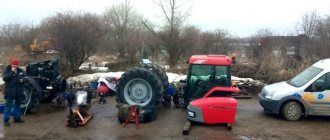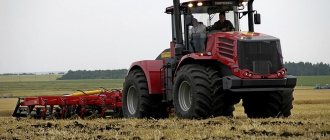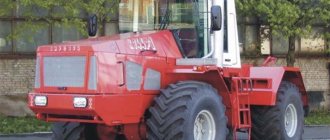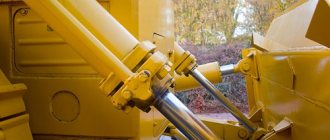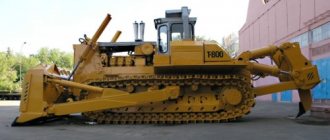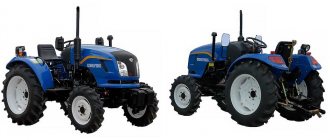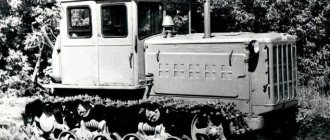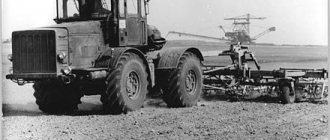A huge variety of machinery is used in agriculture. Starting from tractors, seeders and watering machines. The most popular tractor today is the T 25. This brand has been known since 1966. Available in various modifications and with various additional functions. The tractor is intended for plowing on light soils, inter-row cultivation of sprouted crops and transportation of small loads. The ability to install mounted and trailed mechanisms on a tractor has greatly expanded its scope of activity.
The most famous brands: T-25A1 (base model), T-25A2 (tent), T-25A3. The series of these machines is constantly updated, so the new T 25 tractors constantly occupy a leading position. Such tractor machines, which have a small range of power capabilities, are one of the most environmentally friendly vehicles. Tractors of this model range fully comply with the necessary standards and GOSTs. Despite its small dimensions, the equipment is able to satisfy a sufficient range of requests and perform a number of work tasks with high productivity. One of the main advantages of such vehicles is their maneuverability.
The most popular attachments:
- vegetable single row digger
- field sprayer
- landing machine
- frieze mechanism for cutting the soil layer
- diffuser
- cultivator
The T-25 can be used with almost any attachment. In order to quickly change from one additional equipment to another, special equipment must be equipped with spare parts. In stores and specialized bases you can order any equipment, including snow removal attachments.
Today the price of the T 25 is several times lower than that of other representatives of this class of specialized equipment. It is the successful pricing policy of the manufacturer of this model of tractors, in excellent combination with the high technical capabilities and economical operation of these machines, that explains the wide popularity of this model of work transport.
The price of a new tractor on the specialized equipment market is within reason; it fully corresponds to the combination of price and quality. When buying a tractor, first of all you need to decide on the model, namely why you need this equipment. Next, you need to think about what additional functions you may need in your work. After all, if you buy a new tractor, then along with it you can order all additional mechanisms from the manufacturer. Thus, you can significantly save your budget.
Overview of main technical characteristics
The T 25 cabin is glazed, single-seat and two-door, but very comfortable for long-term work. The cabin compartment is equipped with heating and light, a roll cage and insulation to protect against external noise. The presence of heating and noise-insulating devices makes transport stand out against the background of other similar technical means. Also, when developing the design of this model of tractor equipment, special attention was paid to the convenience and functional comfort of the driver. Therefore, the cabin is equipped with a ventilation system and the ability to naturally ventilate the interior, as well as rear-view mirrors, which significantly improve the level of visibility while the car is moving. The existing steering column is adjustable, making work easier.
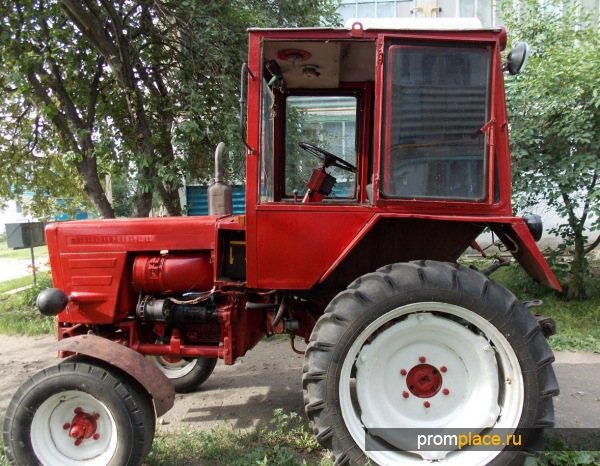
The T 25 tractor, the technical characteristics of which set it apart from other models, is a universal transport vehicle. It's basically mechanical steering. Air cooling is the main technical characteristic. The tractor is controlled using the front wheels. Also on the T 25 you can fill the drive wheels with liquid. All wheels on the tractor are pneumatic. Specific fuel consumption - g/kW*h (g/hp*h) 223 (164.3). Tractor weight - 2020+50 kilograms. There are eight forward gears and only six reverse gears. The clutch in the tractor is single-disc dry. The brakes are band brakes, with a separate drive on each side.
The T 25 engine has an increased speed, which makes maintenance easier. Especially if repairs are needed in the field. Engine: D21A1 diesel, four-stroke, two-cylinder, air-cooled, with direct fuel injection. It runs exclusively on diesel fuel, which allows significant savings on fuel due to the density of the combustible material. Diesel engines are also much more affordable and easier to maintain. This model is not so dependent on the fuel and oil used during operation. All this makes this model even more popular, especially in small farms. Develops power of 25 horsepower at 1800 rpm. But such engines have a number of negative points: lower RPM ranges; as well as diesel engines with fuel injection, produce more smoke and odor, and are afraid of cold weather. It is because of the cold weather that the engine starts very hard and needs additional warming up.
Operating experience of the T-25A “Vladimirets” tractor
Although this tractor was created for work on livestock farms on collective farms, as well as large horticultural and greenhouse farms. It was ideal for small farms. But in principle there were no farmers in the Union, so this machine gained the greatest popularity among the population after its collapse. The vast majority of tractors owned by private owners are machines purchased from various enterprises and collective farms, often in the form of scrap metal and even without documents.
Thanks to the story of its owner, we were able to trace the fate of one of these tractors bought from a collective farm in Belarus in more detail:
Tractors of the 0.6 traction class on the collective farms of Belarus have always been in the shadow of the famous MTZ, they performed secondary functions and were operated by either green youth, gaining experience, or machine operators of retirement age, finishing their careers.
My tractor, bought from a collective farm in 1999 rather as scrap metal, was saved from being melted down. Its appearance was very sad: everything that could be removed had been removed from the engine, without the front wheels, oil pump gearbox, PTO, etc. But! The tractor inside turned out to be more alive than all the living! And this is thanks to the tractor driver who received it new in 1983, a disabled person without a right hand who retired. After a couple of years of orphanhood, the tractor came to the state described above.
It took two years to complete and restore the tractor, it was very difficult - there was nowhere to buy spare parts, and there was no price, the Soviet system for supplying spare parts had already been destroyed, and a commercial one had not yet been created. It was also impossible to find used spare parts, because in Belarus there are only one or two such tractors per collective farm, and they already had their eye on them.
We managed to “get” some of the parts, some had to be made from scratch, and some were installed from other tractors, for example, the missing hitch parts were installed from the MTZ-80.
Manufactured homemade axle for the T-16 hub
Hitch from MTZ-80
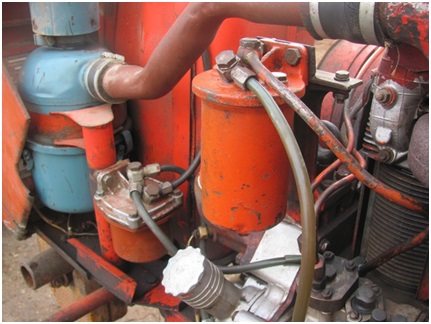
Fuel filters from DT-75 and a homemade air duct
The engine turned out to be from 1989, it was clear from the painted nuts that it had never been opened, I completed it, started it up and it has honestly been modified to this day.
Having taught the tractor to drive, it was necessary to teach it to work - that is, to look for agricultural implements for it, because, again, Belarus is a country of “Belarusians”! There was no talk about searching for original units; everything had to be manufactured by reducing and lightening the “adult” units. So, from year to year, they added more attachments for servicing the farmstead.
The first was a homemade dump trailer, assembled from a welding machine frame, a T-16 body, a UAZ axle, Volga wheels, and a GAZ-SAZ hydraulic cylinder.
Then we managed to purchase a plow, L-101, made in Belarus.
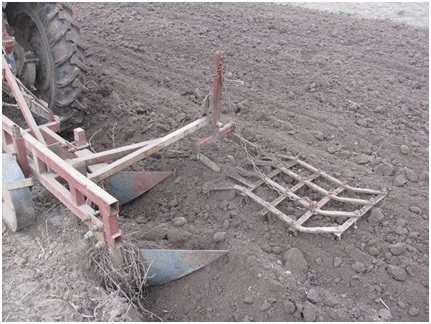
Plow L-101 with an adapted harrow
Belarus and potatoes are synonymous words; the understanding has come that without mechanization of planting it is impossible to mechanize the entire process of cultivating potatoes. Having started the search for components, there was no need to buy a new one; I accidentally came across a Polish planter converted into a two-row planter at a reasonable price. I bought it and am satisfied, as are all my relatives, neighbors and acquaintances.
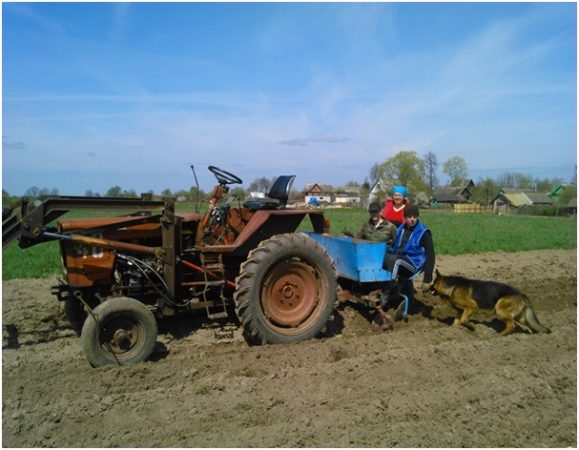
Planting potatoes
Following the planting machine, naturally, a hiller cultivator was also needed. Despite the simplicity of the unit, it had to be redone several times. I was satisfied with the fourth option, all because of the destruction of decommissioned collective farm components. There were no Polish-Chinese offers on the market at that time.
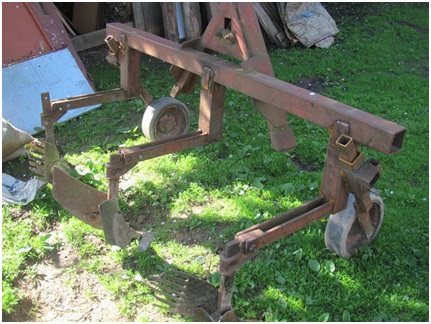
The final version of the hiller
The lack of gas in the rural house and problems with a bad back forced him to make a primitive wood splitter. It is dear because it was made from several photographs from a magazine - pre-Internet ancient times - and I had to figure out a lot of things myself. But everything is successful, it works well, there is room for modernization.
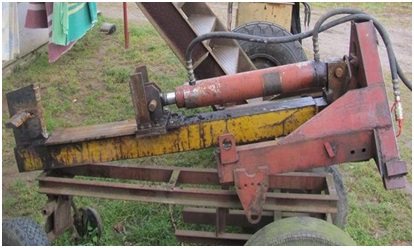
We recommend reading: Motoblock "Agat": technical characteristics
Mounted wood splitter
Tillage mill
With the advent of my own welding machine, it became possible to take on more serious things. I decided to fulfill an old dream - to make a tillage tiller. Based on a utility brush for T-25, the loosening arms were delivered to Belarus from Ussuriysk. Until recently there were doubts about this unit - there is nothing like it in the area - but everything worked out! It has been working for two seasons now, and I can’t imagine further agricultural technology without it.
Before: utility brush for T-25
After: tillage tiller
Homemade loader
Communication with colleagues at a specialized forum identified the need for a full-fledged front loader, with quick-change working parts. The very need for a device that facilitates loading and unloading operations has been felt for a long time; something primitive has already been manufactured, but it’s not the same. Two years of selection of materials, components, work, and in the spring of 2020 the loader passed its first tests. There are still more emotions than technical terms in assessing his work. The T-25 loader is an indispensable assistant that allows you to solve many problems on a rural estate. It’s also independence, because you can’t take much with a pitchfork and shovel, and it’s expensive to constantly hire equipment from outside.
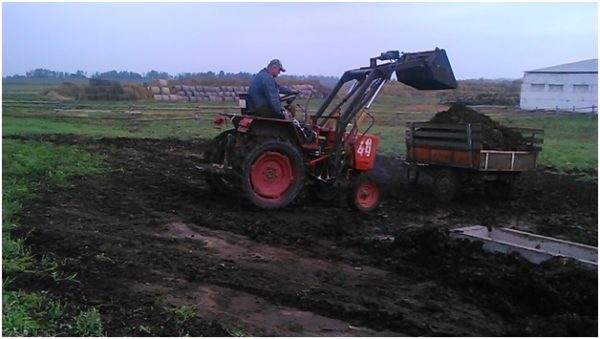
Homemade front loader based on T-25
Double-row mounted digger KTN-2B
This year we managed to mechanize potato harvesting. The purchase of single-row potato diggers made in Poland and China was not considered in principle due to the primitiveness of the technical solutions, and serious industrial machines for the T-25 were expensive and were also single-row. The two-row mounted ones were beyond the tractor's towing class in terms of weight, and the trailed ones did not fit in size.
The search was focused on selecting a two-row mounted digger for subsequent conversion into a trailed one. Such a machine, the KTN-2B from the late seventies, was found, and it was quite easy to adapt it to the T-25. Operating more than two hectares in the first season did not reveal any fundamental shortcomings.
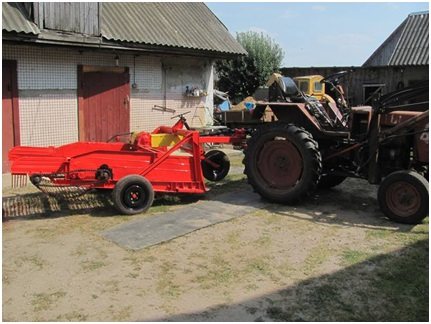
Double-row mounted digger KTN-2B converted into a trailed one
In addition to the above agricultural operations, the tractor was used for many other jobs, forest skidding, towing a four-ton trailer, construction, and it coped with everything, the engine power was sufficient. The presence of slow gears, a PTO, differential locking of the rear wheels, combined with the low weight and dimensions of the tractor, make it indispensable in small plots of land.
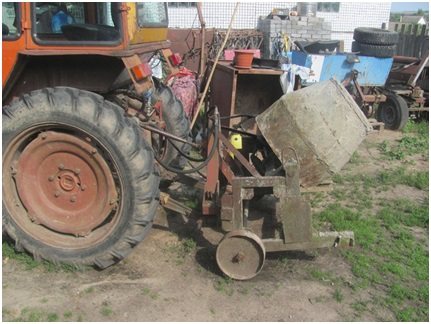
A hydraulically driven concrete mixer is indispensable in construction
All these years, while the trailer equipment was accumulating, the T-25 conscientiously did its job. In principle, there is not much work, because the farm is a subsidiary, the total volume of arable land is about a hectare, there is not much transport work and with a wood splitter, but in such conditions technical reliability is important, so to speak “combat readiness”, so that after a long period of inactivity the tractor starts up and is ready for use, did not require any additional actions. Here the T-25 showed its best qualities, laid down by the designers during its creation.
For fifteen years of operation, after restoration repairs in 2001, no major repairs were made. This restoration repair also includes the restoration (not replacement) of worn parts of the front axle.
The ND-21 single-piston fuel pump immediately failed; repeated repairs resulted in a radical replacement with a UTN-type pump; a four-piston fuel injection pump was adapted from the T-40 tractor. This replacement has fully justified itself - in addition to reliability, the engine's power characteristics have also improved. The hydraulic cylinder of the hitch was replaced due to rod wear; instead of the standard hydraulic pump NSh-10, an NSh-16 was installed.
Everything else is just “consumables”. This does not mean that the tractor does not need repairs, there is a need, but these are scheduled repairs, eliminating oil leaks and other maintenance.
The manufacture of the attachment led to the modernization of the tractor itself in terms of facilitating the work of the tractor driver and improving the ergonomics of the workplace.
At this stage, an additional hydraulic distributor is installed. The standard two-section distributor was replaced with a three-section one and installed higher on the front wall of the cab subframe (as on the T-40), which allows you to operate the levers without changing the position of the tractor driver’s body, without “diving” under the steering wheel.
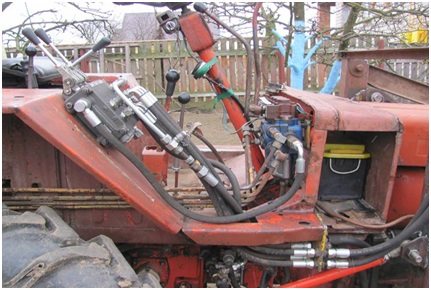
Additional hydraulic distributor of the T-25 tractor
All hydraulic lines have been moved from the gearbox housing to the cab subframe - this will improve the maintainability of the gearbox when, after dismantling the cab, access to the gearbox cover is immediately provided (as on MTZ).
Design and design features of the model
The design of the T 25 tractor has a number of features. So the gearbox is multi-stage, the suspension is sprung, and the rear linkage system is universal. The supporting area of the lugs is 25 - 35%, the height is 35/43 mm and this helps during work. After rains, the tractor practically cannot work on wet soils. Therefore, to do this, install wide-profile tires or double the wheels. The last resort is to deflate the tires a little, as this can reduce the life of the tires. The main advantage of the T-25 is its front loader. Optimal speed – from 1.37 to 30.28 km/h; The minimum movement radius is 3.5 m. This makes it possible to work in small areas and greenhouses.
Thanks to many of its characteristics, repairing the T-25 tractor is much easier than that of other similar brands. The most common tractor problem is the crankshaft breaking in half. This is due to the fact that the idle speed is not adjusted and the speed itself is below the minimum values. It is also very common for grease to leak through the mounting studs and the gasket at the final drives. Basically, to avoid this, you must first of all not overload the equipment and check and tighten them in a timely manner. For a careful economic person who is used to doing repairs on his own, it will be pleasant that this machine will fit parts from various domestic equipment. Before each season, you need to clean the centrifuge, thanks to this there will be fewer problems during operation of the equipment.
The main manufacturers of tractors of this model are for the T-25 - Kharkov Tractor Plant, T-25 - Vladimir Tractor Plant, T-25A - Vladimir Tractor Plant. The most popular tractor, Vladimirets T 25, is produced at the Vladimir Motor and Tractor Plant OJSC, which is a leading enterprise in its region.
Attachment system
The rear linkage mechanism is designed to attach various attachments to the tractor, and also makes it possible to lift it for transportation and lower it into a working position.
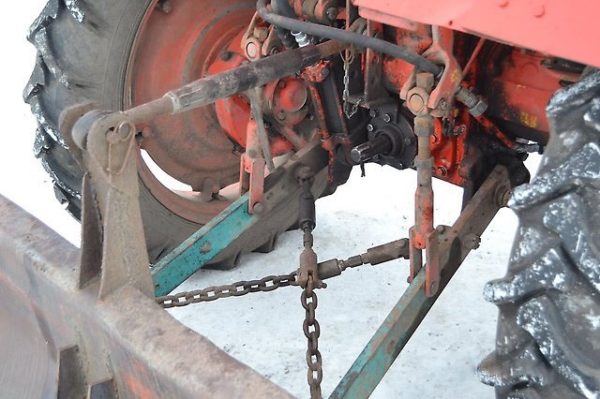
The T-25A tractor hitch system has a classic three-point design. The structure includes: connecting chains, a central link and two longitudinal links, one end of which is attached to cast brackets, which are screwed to the tractor gearbox. Special braces connect the longitudinal rods to the lifting arms; these arms, in turn, receive force from the power cylinder through the lifting shaft. Attachments are directly attached to the free end of the longitudinal and central links.
We recommend reading: Bulldozer "Chetra T-35": Technical characteristics
Hydraulics . The purpose of this system is to ensure the operation and control of hydraulics of various trailed and mounted equipment, as well as to raise and lower the hitch mechanism.
The hydraulic system consists of an oil tank, an oil pump, one or more power cylinders, a hydraulic distributor and oil lines.
The oil gear pump creates pressure in the system, this pump supplies oil from the tank to the distributor under high pressure. Further, depending on the position of the distributor spool, oil enters the upper or lower cavity of the hydraulic cylinder, moving the piston in the desired direction.
